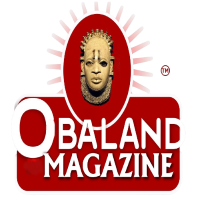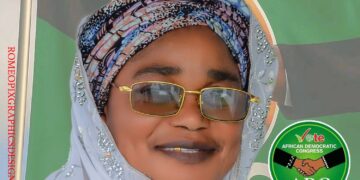When Oluchi Sonia Okwenna was diagnosed with muscular dystrophy, she felt sad. The young lady said she felt she was doomed. But soon enough, she got the courage to face her health condition and live her life.
Okwenna told Saturday Sun that she started manifesting symptoms of the disease when she was an adolescent but that she got the correct diagnosis when she was about 22 years old.
What is muscular dystrophy?
It is a group of diseases that cause progressive weakness and loss of muscle mass. In muscular dystrophy, abnormal genes (mutations) interfere with the production of proteins needed to form healthy muscle.
There are many kinds of muscular dystrophy. Symptoms of the most common variety begin in childhood, mostly in boys. Other types don’t surface until adulthood. There’s no cure for muscular dystrophy, but medications and therapy can help manage symptoms and slow the course of the disease.
The main sign of muscular dystrophy is progressive muscle weakness. Specific signs and symptoms begin at different ages and in different muscle groups, depending on the type of muscular dystrophy.
The cause of muscular dystrophy can be traced to one’s genes. Certain genes are involved in making proteins that protect muscle fibers. Muscular dystrophy occurs when one of these genes is defective.
Each form of muscular dystrophy is caused by a genetic mutation particular to that type of disease. Most of these mutations are inherited.
Signs and symptoms of muscular dystrophy which typically appear in early childhood include frequent falls, difficulty rising from a lying or sitting position, trouble running and jumping, waddling gait, large calf muscles, muscle pain and stiffness, and learning disabilities as well as delayed growth.
Muscular dystrophy occurs in both sexes and in all ages and races. People with a family history of muscular dystrophy are at higher risk of developing the disease or passing it on to their children.
The complications of progressive muscle weakness include trouble walking, trouble using arms if the arms and shoulders are affected, shortening of muscles or tendons around joints, breathing problems, curved spine, heart problems, and swallowing problems.
Determined to be successful no matter what, Okwenna revealed that she has learned a lot living with muscular dystrophy. She said living with the disease has taught her that her greatest pain can become her greatest gain. She added that living with the medical condition has made her an icon of inspiration to other people going through the same thing.
She said: “Because of it, I have met a lot of people that I may ordinarily not have been able to access in my entire life. I have got financial support from a lot of people as well.”
While Okwenna tries to be positive about living with muscular dystrophy, she revealed some of the challenges she faces daily trying to live and do simple things for herself.
“Every simple basic physical activity is very difficult. I experience difficulty walking, getting up from a seat, bending, squatting, raising my hands, wearing my clothes, brushing my teeth, having my bath, combing my hair and even eating,” she said.
Even though she tries to live her best life despite her health challenges, Okwenna stated that she has suffered discrimination since the manifestation of this disease. She recalled that when she was an adolescent, the discrimination started when she was in boarding school. She was nicknamed ‘Hot Stepper’ and her schoolmates would mock her because of her gait.
“Suitors reject me once they learn about my condition. I was denied some jobs even when I clearly passed the interview. A lot of people always make me feel like I should stop trying, that I can’t amount to anything useful. This even comes from family and friends,” Okwenna revealed.
But despite some of the hard times, she faces while people discriminate against her, Okwenna said that her family has been supportive of her. She added that financial difficulties make it look like they are not caring, but they do try their bit. Okwenna noted that her mum and her immediate younger brother had shared in her burden a lot. She said she remains grateful for their love and support.
Okwenna told a news media editor that despite living in pain while doing simple things for herself daily, she’s optimistic about life and living. She is a social media marketing strategist who shares her story through videos.
“Since they refused to give me a good job, I created one for myself. I am a social media marketing strategist and consultant running my own company from home. I empower myself with a lot of digital skills since I can’t do much physically,” she said.
Okwenna added that she is building a huge fan base on social media, especially on Facebook and Instagram so that her story can encourage other people living with muscular dystrophy so they won’t feel alone or discouraged about life. She is also a talented writer who has published a book.
Okwenna who hails from Osumenyi Town in Nnewi South L.G.A of Anambra State has a message for anyone going through a difficult phase in their life. She said: “There’s a brighter side to any situation. Lean on God to find it. As long as you are alive, God has a purpose for keeping you alive. Lean on him to find it. Just trust God completely that the end will be beautiful. That is what I did and thank God, I am beginning to reap the benefits.”
Okwenna who had her secondary school at the Federal Government Girls College, Langtang in Plateau State, and her university education at the University of Port Harcourt where she studied Computer Science, is not sitting around waiting for money to land on her lap. She said that she has a lot of business ideas that she plans to develop when she has the capital.
“I started my Masters in Information Technology at the National Open University of Nigeria but paused three years ago because of financial constraints,” she said.
Okwenna stated that one of her life’s missions is to help people in her condition ease their burden by providing them with the finances and other things they need to live a better life.
She is also helping young people between the ages of 12 and 23 years to figure out the right career path that is best for them so they can become successful early in life.
She further told a news reporter: “I plan to get a Masters’s and Doctorate degree in Career and Youth development so that I can be more equipped to do this assignment excellently as I believe that is one of my assignments in this world.”
Edited By Kate Halim









